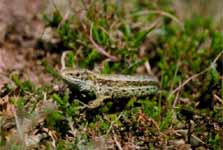The ecology around the Tarland catchment is of a high value. The Tarland Burn and three of its tributaries, namely: the Burn of Blackmill, Burn of Glaaick, and the Stoneyford Burn form part of the River Dee Special Area of Conservation (SAC) which has been identified for its internationally important populations of otter, Atlantic salmon and freshwater pearl mussel.
Ongoing work in the Tarland catchment to improve water quality through the use of buffer strips and small wetland areas contributes directly towards improving the habitats of these species. Electro-fishing results have shown significant increases in the numbers of trout and salmon parr downstream of areas where work has been done.
The area is also known to support a diverse range of plants and other animal species including ospreys, the common lizard, adders, and several species of bat.
Information on some of these species can be found on the following websites and factsheets:







